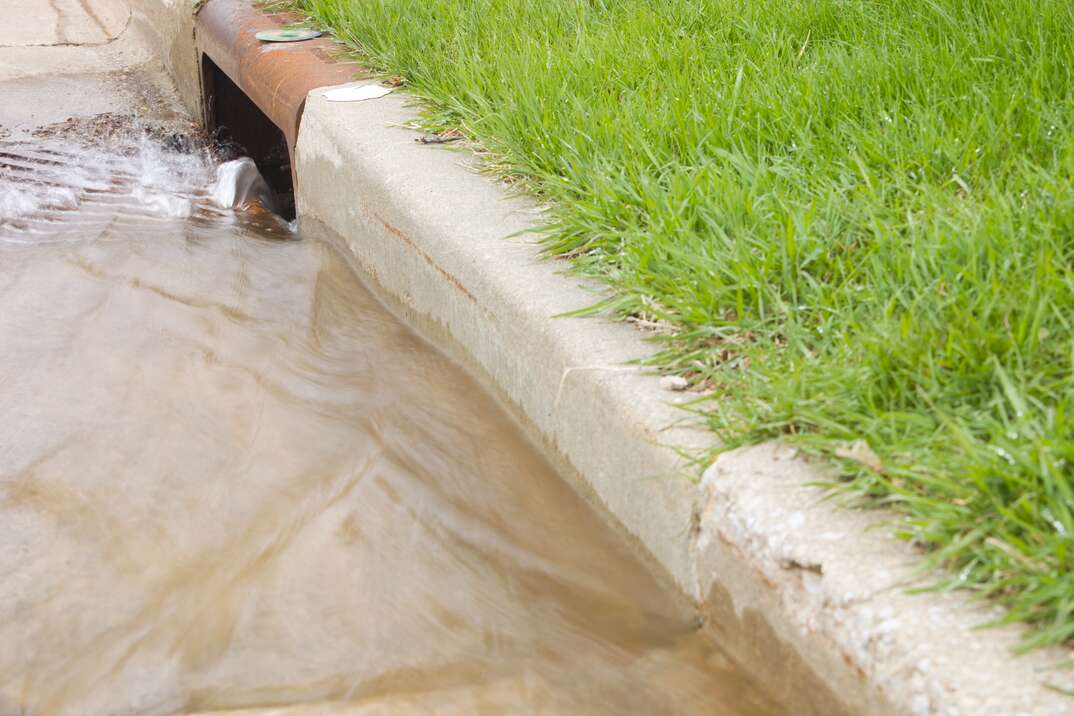What's a Storm Drain?

It's never fun to be stuck indoors during rainy weather, and it can be downright stressful if you're worried about standing water ruining your lawn.
If sudden downpours always send you into a panic, installing a storm drain may help ease your stress by protecting your landscaping.
What Is a Storm Drain?
A storm drain is a drain designed to collect rainwater. You'll often see grated storm drains installed in public roads to prevent rainwater from accumulating and causing a flooding risk. They also help drain melted ice and snow from public areas.
However, you may also have a storm drain installed on your property to prevent standing water, especially if you live in a coastal area or a rainy climate. Sometimes, residential gutters connect to a storm drain to control water runoff.
You may have heard a storm drain referred to as a “storm sewer,” but there are significant differences between sewers and storm drains. Storm drains only drain fresh water from rain and snowfall to prevent flooding. They're not designed to drain sewage and wastewater.
Meanwhile, sewers drain wastewater and sewage from plumbing fixtures like sinks, showers and toilets. The wastewater flows through a network of underground pipes to a treatment plant. It's then treated and filtered before returning to the water supply system.
Where Do Storm Drains Go?
Storm drains carry water along a series of underwater pipes or ditches. It flows back into a body of fresh water like a river, stream or lake. Therefore, it's important to avoid pouring wastewater or chemicals down a storm drain because it could pollute these bodies of water.
Elocal Editorial Content is for educational and entertainment purposes only. Editorial Content should not be used as a substitute for advice from a licensed professional in your state reviewing your issue. Systems, equipment, issues and circumstances vary. Follow the manufacturer's safety precautions. The opinions, beliefs and viewpoints expressed by the eLocal Editorial Team and other third-party content providers do not necessarily reflect the opinions, beliefs and viewpoints of eLocal or its affiliate companies. Use of the Blog is subject to the
Website Terms and Conditions.The eLocal Editorial Team operates independently of eLocal USA's marketing and sales decisions.



